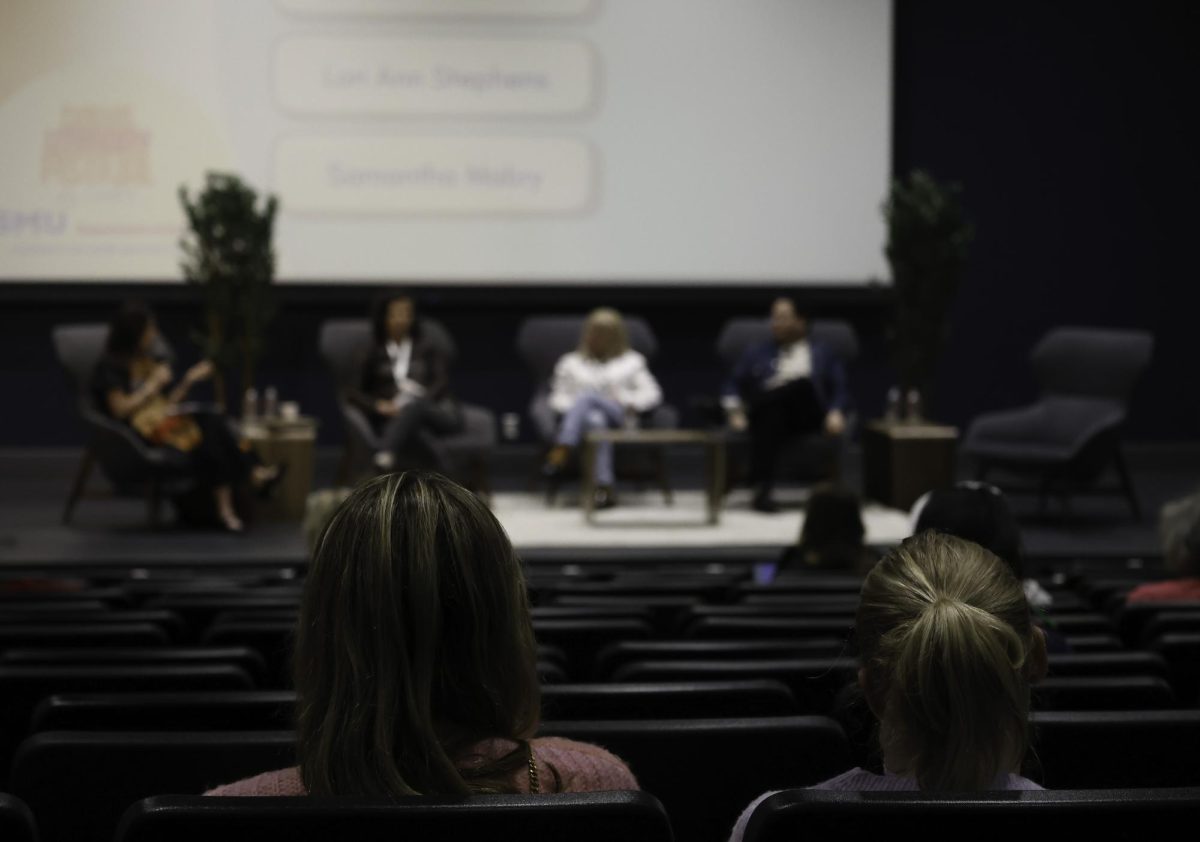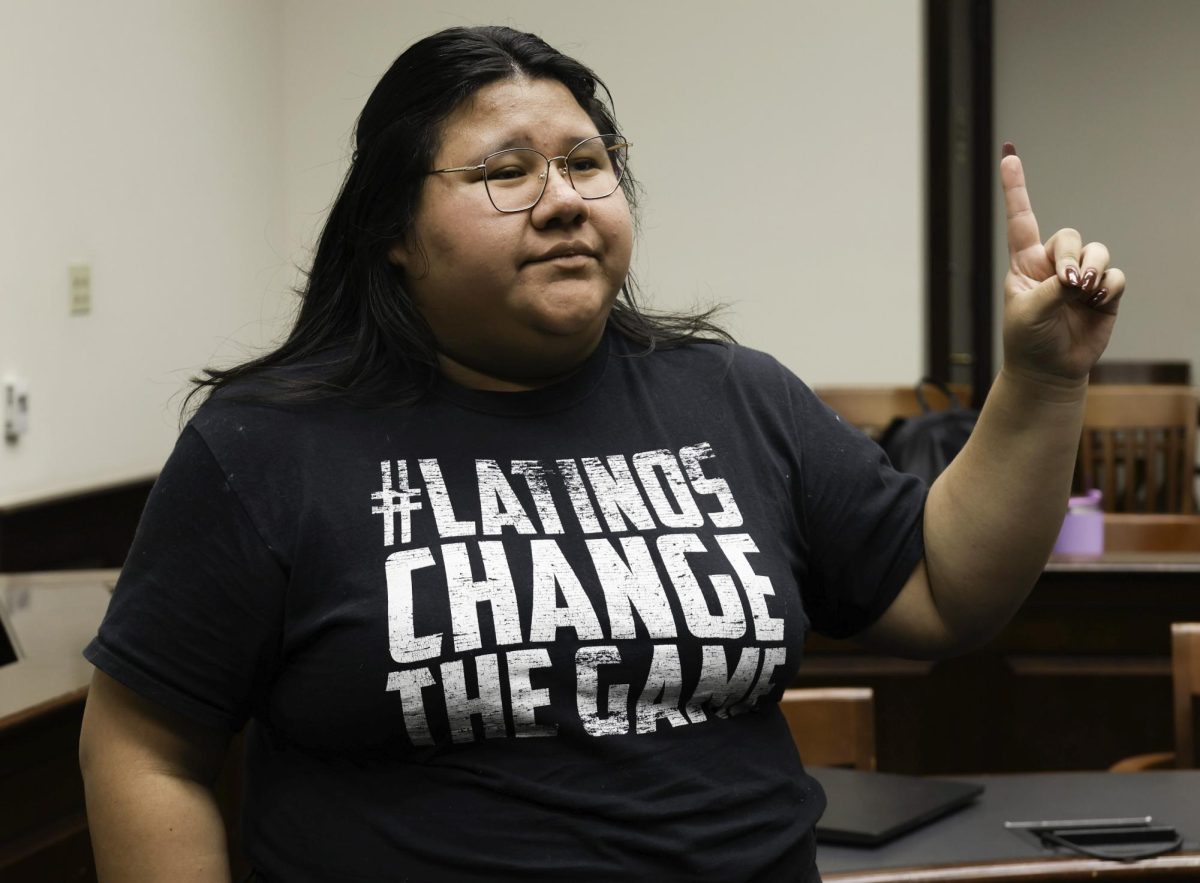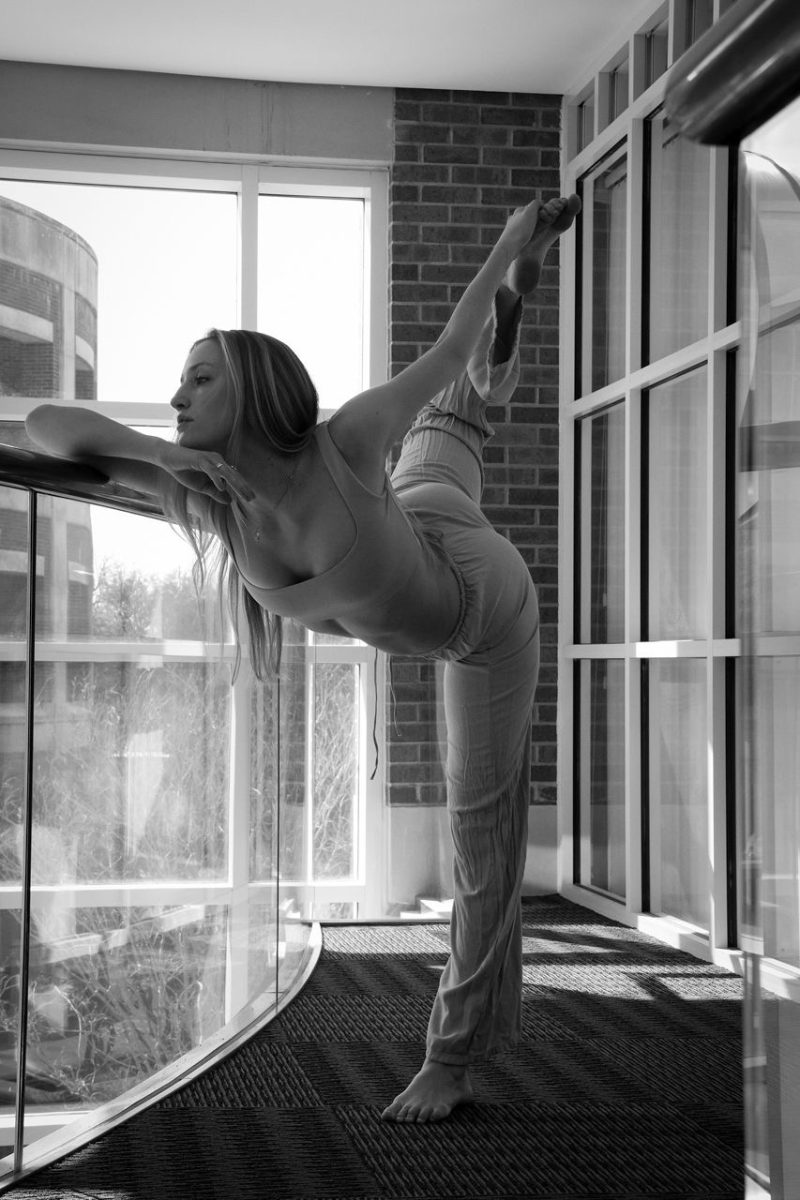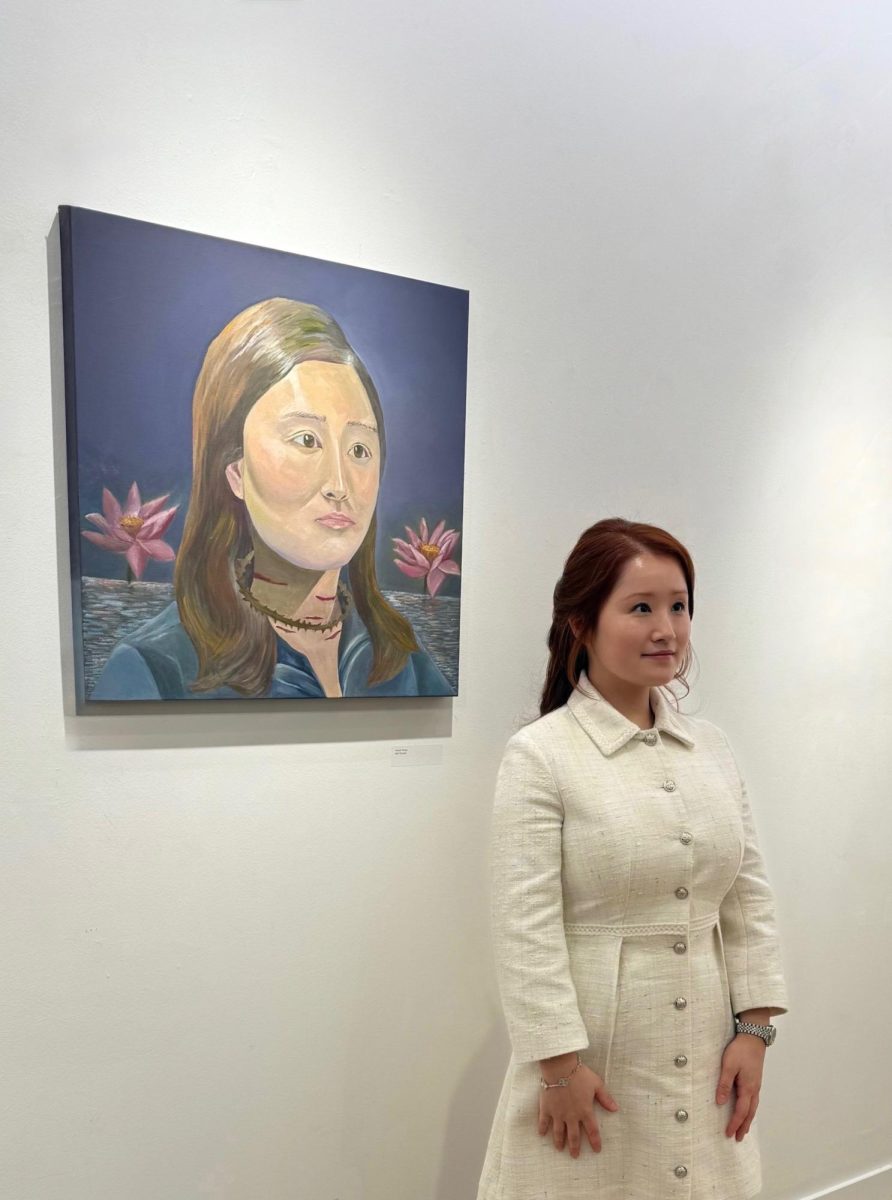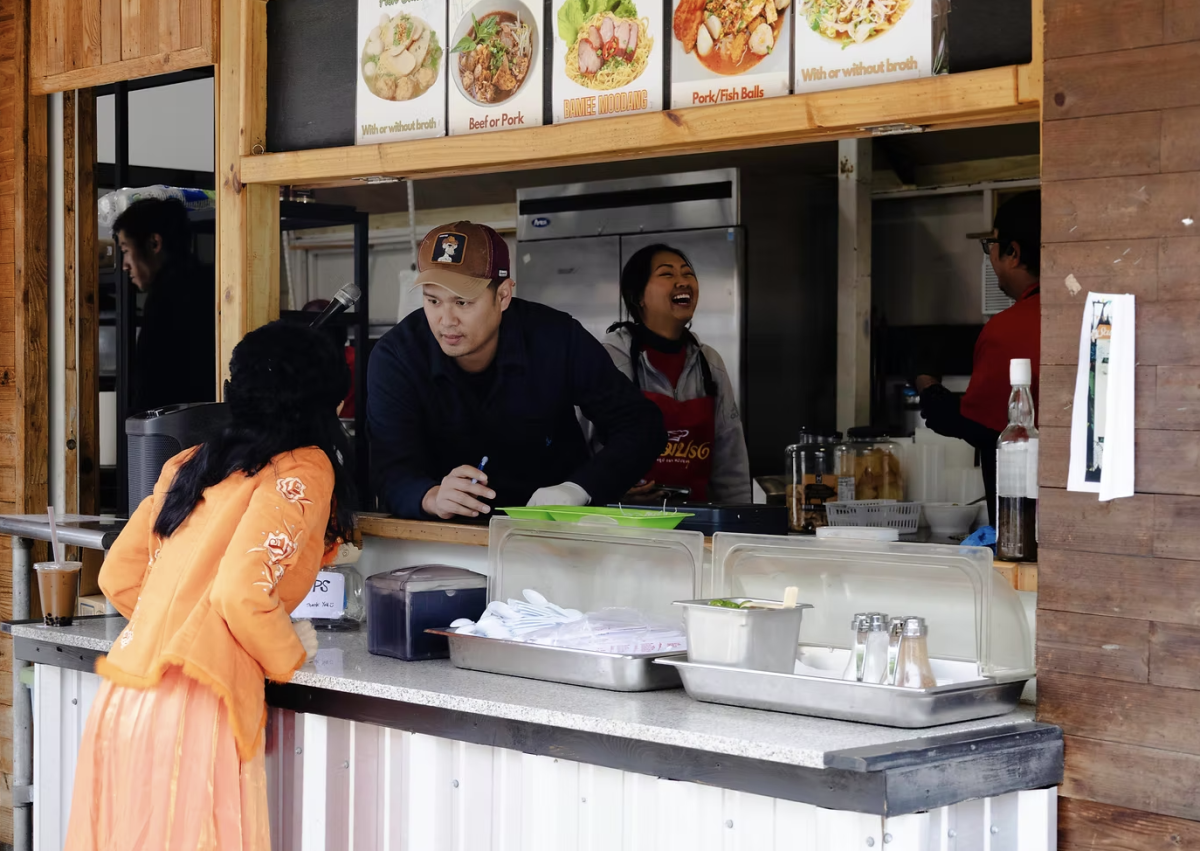Spread across two rainy days, the Dallas Literary Festival challenged the weather with over 20 indoor and outdoor events on April 2 and 3. Split between Hughes-Trigg and Dallas Hall Lawn, vibrant yellow, orange and red balloons, which adorned arches, tents and tables, greeted attendees.
This year marked the 50th anniversary of the Dallas Literary Festival, an event that SMU has a longstanding, close-knit relationship with through its English department and The Narrative Now Initiative—an initiative within the English department.
Christopher González, the chair of the English department said he wants the festival to be an outlet for discovery.
“I want people to discover something powerful in the written word, whether it’s lyric poetry or whether it’s a novel or something in between,” González said. “I want people to come here and leave with an understanding not only of literature, the literary, in a different way but I want them to discover an author or a poet who was perhaps not on their radar.”
González added that the festival promotes the exploration of literature, especially because it helps people connect with human culture.
“That’s what we need to do at a time when the literary is often not equated with money,” he said. “But it is a part of our human culture and so, these things will go away if we don’t support them.”
The “Writers in Our Backyard: SMU Authors” event introduced SMU students and the Dallas community to outstanding talent rooted in the campus community. Authors and professors Samantha Mabry, Lori Ann Stephens and Sebastian Paramo shared their insights into authorship, professorship and politics.
Mabry shared advice she was given after being asked about balancing her professorship and authorship.
“Someone once told me there’s a difference between writing and typing. And so, I try to think about that a lot. I write a lot when I’m not typing,” Mabry said.
She revealed that she shows her students her letters from editors to impart the importance and harsh realities of critical feedback.
“It’s helpful for me to be able to tell them I know what it’s like to be on the receiving end of criticism,” Mabry said.
Stephens added to a conversation, discussing the phenomenon of adults returning to fictional literature for comfort, suggesting one possible cause: a mutual lack of surety between adults and children.
Moderator Stephanie Amsel dove into Paramo’s personal poetry book and how poetry heals memory. Paramo clarified his stance on trauma for the audience.
“I think I’m walking with it in a way,” Paramo said. “I think there’s a forest that I’m writing into and it can be a dark forest, but the goal is to get to the other side. And it’s never the same pathway, and there are going to be obstacles and characters that you run into along the way. But hopefully, you can write your way out of it in a sense.”
Interspersed between tents on Dallas Hall Lawn, haunting classical music mingled with the sounds of students rushing between classes, a lyrical reminder of the proximity of creative expertise. The siren call drew curious passersby to booths and the small stage where authors and performers added their voices and tunes to the harmony.
The “My Style: Fashion and Sports Writing” event moved between subjects of creative freedom, confidence and defiance with a riveting conversion between authors and fashion experts Ethan Lascity, Mitchell Jackson and Tara Donaldson.
When asked what advice the panelists had for students who wanted to delve into the literary world, journalism or academia, Jackson responded that it’s important to stay determined and foolish.
“Stay hungry. Stay foolish,” Jackson said.“It is foolish to go into this industry right now. But stay foolish.”
Lascity added that students should understand they will face rejection, but not to be discouraged by being told no.
“I guess what I would say is to get used to rejection,” Lascity said. “A lot of people who don’t see your way of looking at something and you just have to find that one person to say ‘yes’ in order to get your foot in the door.”
In an intriguing turn of discussion, an audience member asked if runway fashion was influenced by the layperson’s style.
“One hundred percent,” Donaldson said. “I mean the reason why every high-end fashion house has sneakers is because of us, because of what people are wearing in the streets. Culture is one hundred percent coming from the bottom up. They are partnering with people who are in the culture, people who are creating the culture.”
Among the varied mediums, artists and topics this event connected a community unbothered by their differences in honor of their shared respect for literature, creativity and free speech. The rich plethora of voices embraced the festival’s theme of “My County,” invoking pride and sentimental reflection within the rapt audience while inspiring a new generation of writers.



